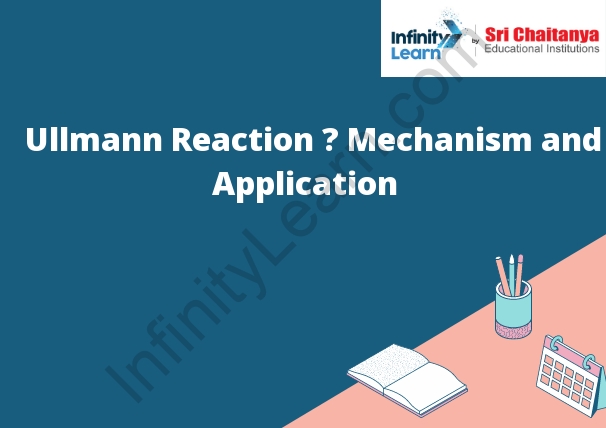Table of Contents
Ullmann Coupling
Ullmann Reaction – Mechanism and Application: The Ullmann coupling is a coupling reaction between an aryl halide and an aryl amine. The reaction proceeds through an intermediate carbene species, which is generated by the elimination of carbon dioxide from the aryl amine.
The Ullmann coupling is a type of coupling reaction used in organic chemistry to join two aromatic rings. The Ullmann coupling is a palladium-catalyzed reaction that uses a copper salt as the catalyst. The reaction proceeds by the formation of a copper-palladium complex that then reacts with the two aromatic rings to form the desired product.
The Ullmann coupling is a versatile reaction that can be used to join a variety of different types of aromatic rings. The reaction is particularly useful for the synthesis of complex molecules with multiple aromatic rings. The Ullmann coupling can also be used to join two different types of aromatic rings, which can be helpful for the synthesis of complex molecules with multiple functional groups.
The Ullmann coupling is a relatively simple reaction to carry out, and it can be performed with a variety of different types of palladium catalysts. The reaction is also tolerant of a wide range of functional groups, which makes it useful for the synthesis of complex molecules. However, the Ullmann coupling is a slow reaction, and it can take several hours to complete.

Ullmann Coupling Reaction Mechanism
- The Ullmann coupling reaction is a type of coupling reaction in organic chemistry. It is a two-step process in which an alkyl or aryl halide is first coupled with an organometallic compound to form a new organic molecule. This new molecule is then coupled with another alkyl or aryl halide to form a new organic molecule. The Ullmann coupling reaction is named after its inventor, Fritz Ullmann.
- The first step of the Ullmann coupling reaction is the coupling of an alkyl or aryl halide with an organometallic compound. In this step, the alkyl or aryl halide is reacted with an organometallic compound to form a new organic molecule. The organometallic compound is a compound that contains a metal atom bonded to a carbon atom. The metal atom in the organometallic compound can be either a carbon atom or a metal atom.
- The second step of the Ullmann coupling reaction is the coupling of the new organic molecule formed in the first step with another alkyl or aryl halide. In this step, the new organic molecule is reacted with another alkyl or aryl halide to form a new organic molecule. The alkyl or aryl halide can be the same or different from the alkyl or aryl halide used in the first step.
Mechanism of Ullmann Reaction in Detail
- The Ullmann reaction is a palladium-catalyzed coupling reaction between an aryl halide and an organometallic compound. The organometallic compound is typically an alkyllithium, Grignard reagent, or organozinc reagent. The reaction proceeds through the formation of a palladium-carbon bond.
- The aryl halide is first converted into a palladium-halide complex. The organometallic compound is then added, and the palladium-halide complex is converted into a palladium-carbon complex. The carbon-palladium bond is then formed, and the product is released.
Role of Copper in Ullmann Reaction
In the Ullmann reaction, copper is used as a catalyst to promote the coupling of two molecules of an aryl halide. The copper catalyst helps to bring the two aryl halide molecules together to form the desired product. The Ullmann reaction is a classic organic reaction used to form carbon-carbon bonds. The reaction involves the use of copper as a catalyst to form a carbon-copper bond. The reaction is typically used to form carbon-carbon bonds in aryl halides. The copper catalyst is able to stabilize the carbon-carbon bond and promote the reaction.
Ullmann Reaction Application
- The Ullmann reaction is a versatile method for the synthesis of aryl halides from aryl bromides and aryl iodides. In the presence of a palladium catalyst, the Ullmann reaction proceeds through a coupling of the aryl halides with an aryl Grignard reagent to give a substituted aryl magnesium halide. The substituted arylmagnesium halide then undergoes a nucleophilic displacement reaction with an aryl chloride to give the desired aryl chloride.
- The Ullmann reaction can be used to synthesize a wide variety of aryl halides, including substituted and unsubstituted aryl chlorides, bromides, and iodides. The reaction is especially useful for the synthesis of difficult-to-access aryl chlorides, such as those containing electron-withdrawing functional groups. The Ullmann reaction can also be used to prepare aryl ethers and aryl esters by using an aryl halide and an alcohol or an acid, respectively.
Significance of Ullmann Reaction
The Ullmann reaction is significant because it is a versatile method for the synthesis of a variety of aromatic compounds. The Ullmann reaction is a synthetic process that uses palladium as a catalyst to convert aryl halides into aryl-palladium complexes. The Ullmann reaction is an important process in organic synthesis because it is a versatile route for the formation of carbon-carbon bonds. The reaction can be used to form a variety of different carbon-carbon bonds, including bonds that are substituted or unsubstituted. Additionally, the Ullmann reaction is a relatively mild reaction that does not require high temperatures or pressures. This makes it a desirable reaction for synthesizing complex molecules.









